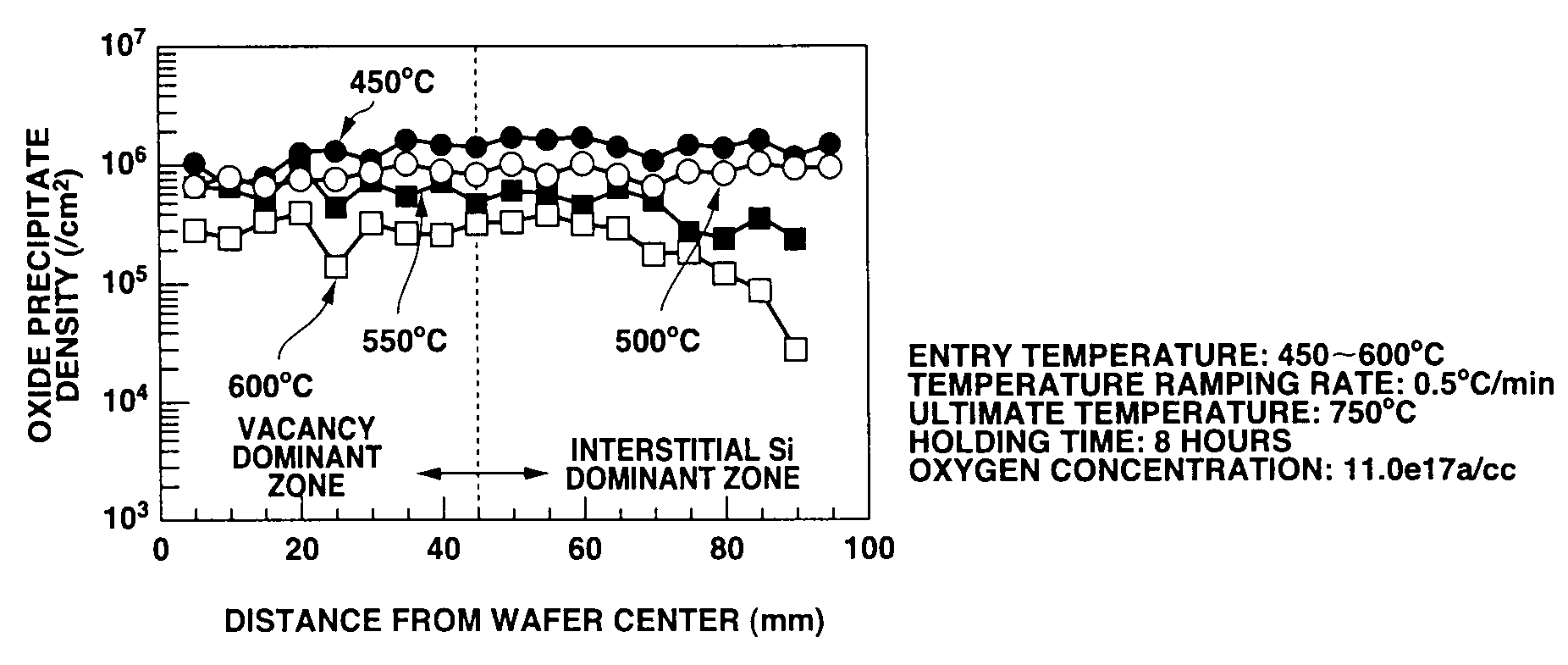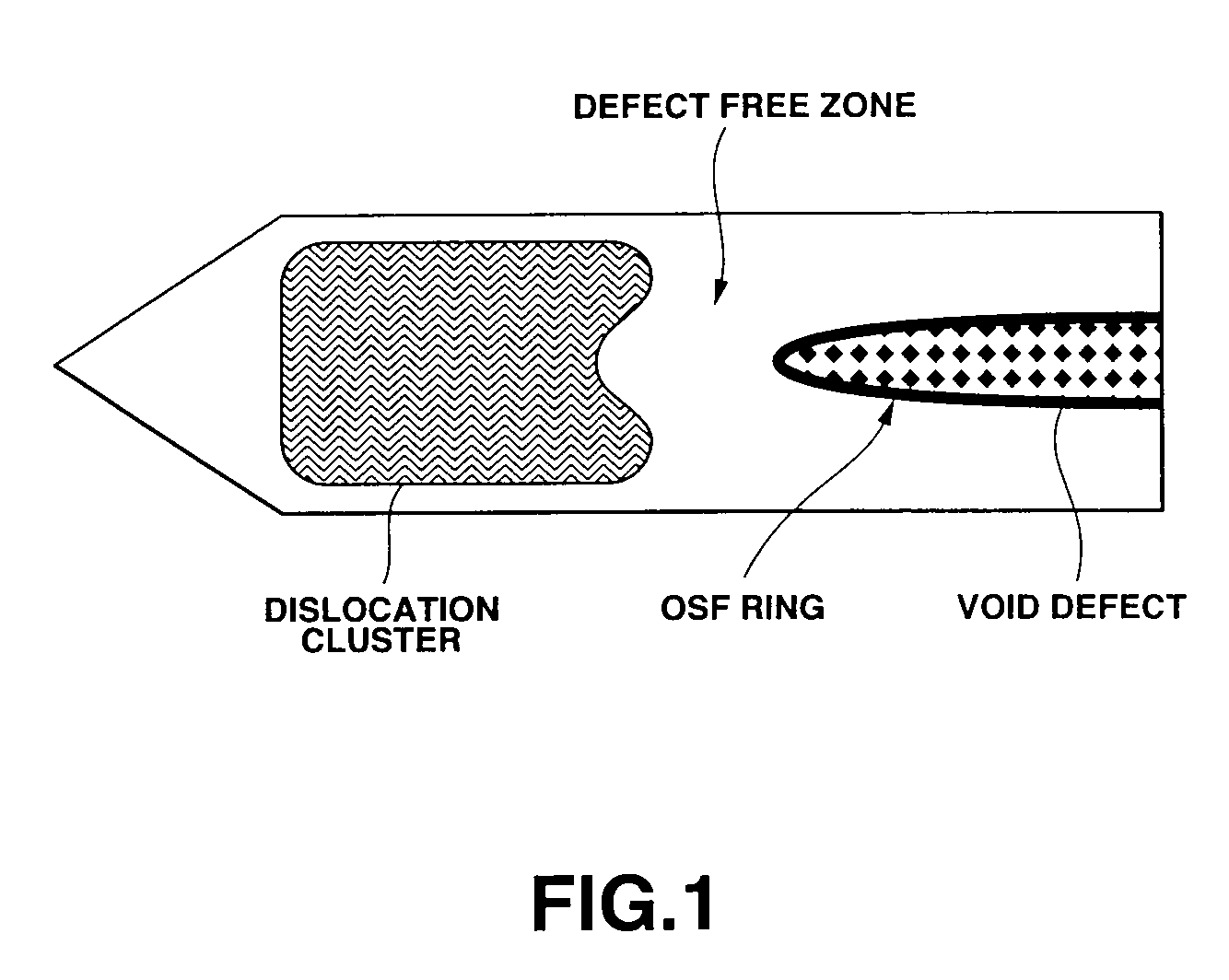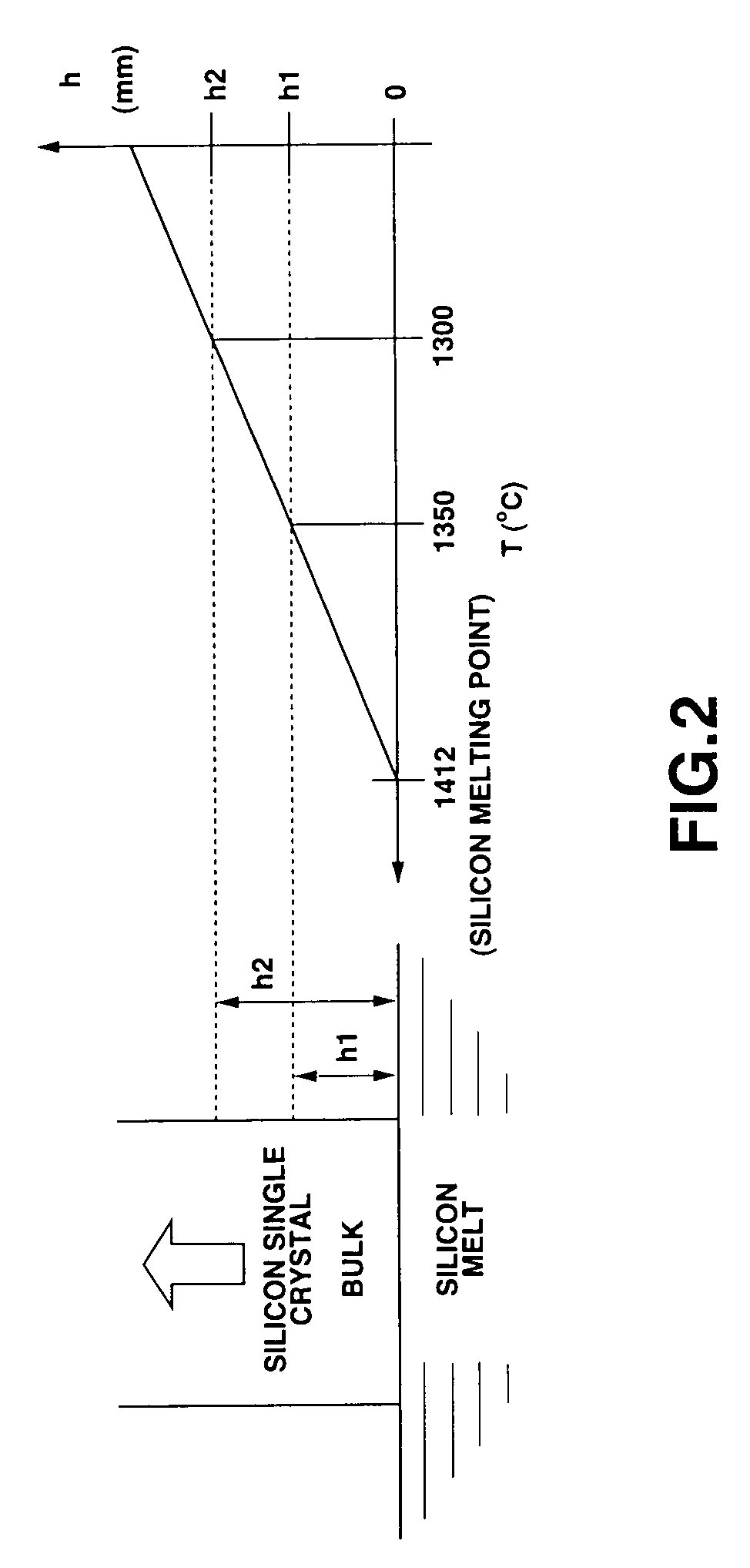Production method for silicon single crystal and production device for single crystal ingot, and heat treating method for silicon crystal wafer
a production method and single crystal technology, applied in the field of silicon single crystal production method and production device for single crystal ingot, and heat treatment method of silicon crystal wafer, can solve the problems of reducing the production efficiency affecting the leakage characteristics, and increasing the time per production cycle of single crystal ingot, so as to achieve stable supply and high quality
- Summary
- Abstract
- Description
- Claims
- Application Information
AI Technical Summary
Benefits of technology
Problems solved by technology
Method used
Image
Examples
embodiment a1
[0128]We studied growth conditions to obtain perfect crystals using various growth conditions. Table A1 shows the result. Experiments were performed using a crystal which diameter is 200 mm. The distribution of crystal defects can be studied by observing the surface of the crystal after soaking the crystal in etchant, but in this embodiment, the distribution of defects was studied by performing non-stirring Secco etching for voids and dislocation clusters, and by performing light etching after oxidizing heat treatment for three hours at 780° C., then for 16 hours at 1000° C. for OSF. The in-crystal temperature gradient in the pulling axis direction at each location in the radius direction was determined by a global heat-transfer analysis in the growth device currently established.
[0129]Table A1 shows the range of the growth speed where a perfect crystal was obtained under each growth condition. Here the conditions where the range of growth speed is not indicated are conditions under...
embodiment a2
[0133]When a crystal is grown at a constant pulling speed under the growth conditions determined in Table A1, the growth conditions may gradually be deviated from the optimum growth conditions because of the change of the in-crystal temperature gradient during growth. If this state is left alone, a crystal ingot, which is deviated from the defect free growth conditions, as shown in the conceptual diagram in FIG. 1, is produced, so it is necessary to guide the conditions to be optimum by making appropriate changes.
[0134]In the embodiment A2, the pulling speed is changed to guide the conditions to be optimum in such a case. And as Table A2 shows, a perfect crystal was obtained by changing the pulling speed V following up with the change of the length of the crystal.
[0135]
TABLE A2predetermined conditions of pulling speedPresent inventionCrystalExistenceExistencelengthG1 centerPulling speedV / G centerofPulling speedV / G centerof(mm)(° C. / mm)(mm / min)(mm2 / ° C. min)defects(mm / min)(mm2 / ° C. m...
embodiment a3
[0136]This embodiment is for indicating that a perfect crystal can be obtained by changing the distance between the silicon melt and the heat shielding element when the conditions are gradually deviated from the optimum growth conditions because of the change of the in-crystal temperature gradient during growth, in the same way as the embodiment A2 (Table A3).
[0137]
TABLE A3Predetermined conditions on distance betweenSi melt and heat shielding elementPresent inventionDistance betweenDistance betweenCrystalPullingSi melt andExistenceSi melt andExistencelengthspeedheat shieldingG1 centerV / G centerofheat shieldingG1 centerV / G centerof(mm)(mm / min)element (mm)(° C. / mm)(mm2 / ° C. min)defectselement (mm)(° C. / mm)(mm2 / ° C. min)defects00.43702.7860.154Yes702.7860.154Yes1000.43702.720.158Yes702.720.158Yes2000.43702.6430.163Yes702.6430.163Yes3000.43702.5610.168No702.5610.168No4000.43702.5020.172No702.5020.172No5000.43702.4120.178Yes682.4430.176No6000.43702.3580.182Yes662.4860.173No7000.43702.291...
PUM
| Property | Measurement | Unit |
|---|---|---|
| temperature | aaaaa | aaaaa |
| temperature | aaaaa | aaaaa |
| temperature | aaaaa | aaaaa |
Abstract
Description
Claims
Application Information
 Login to View More
Login to View More - R&D
- Intellectual Property
- Life Sciences
- Materials
- Tech Scout
- Unparalleled Data Quality
- Higher Quality Content
- 60% Fewer Hallucinations
Browse by: Latest US Patents, China's latest patents, Technical Efficacy Thesaurus, Application Domain, Technology Topic, Popular Technical Reports.
© 2025 PatSnap. All rights reserved.Legal|Privacy policy|Modern Slavery Act Transparency Statement|Sitemap|About US| Contact US: help@patsnap.com



